‘That roof over there is mine’: Guatemala’s flooded communities
As flooding submerges homes in isolated communities of Alta Verapaz, many are left without supplies or places to stay.

The hum of a distant helicopter sends everyone scrambling up a steep, muddy mountain incline to an improvised helipad. The treacherous conditions do nothing to slow down the agile but hungry members of the Caseiro Chibut Carchá community, in Alta Verapaz, Guatemala, desperate to attract the passing helicopters.
Excitement builds as the helicopter approaches the wonky H, painted on a small spot of flat rock at the peak of the hill. Stranded on a patch of water-locked land, the community has minimal supplies, no electricity and no fresh water. The helicopter overshoots and lands on the side of a nearby mountain, tantalisingly close and yet made inaccessible by the floods that have inundated the region.
Keep reading
list of 3 items‘No other option’: Climate change driving many to flee Guatemala
Lost and found: Stories from Matamoros camp on US-Mexico border
The disappointment in the air is overwhelming as people slump down on the ground. A child adjusts the large flag, made from a tree branch and red fabric, erected to signal that the community is desperate for aid.
“They are stealing our food,” says a frustrated young man. “Helicopters always land there and never come to us,” he adds despondently.
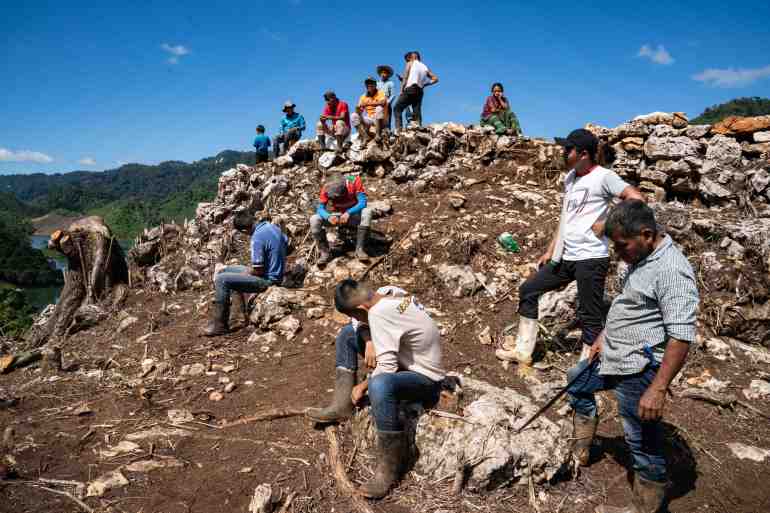
The Guatemalan Coordinator for the Reduction of Disaster (CONRED) estimates that there are 234 communities just like Caseiro Chibut Carchá, left incommunicado following the rains that followed Hurricanes Eta and then Iota in November.
CONRED lists 2.4 million people affected by flooding, with more than 270,000 in temporary shelters. However, David Deleon, a spokesman for CONRED, acknowledges that they do not yet know the total amount of loss and damage to property. Some of those involved in the relief effort have estimated that there could be as many as 50,000 people in isolated communities who are not receiving aid.
‘We lost everything’
The view from the helipad in Caseiro Chibut Carchá is stunning. The sun glimmers over what could be a beautiful lagoon with small peaceful islands. However, on a closer look, the roofs of the houses can be made out a few hundred feet below. Some are above the surface, most are underneath.
Esteban Choc Giut, the Indigenous chief of the village, points to some rooftops in the distance. “That roof over there is mine,” he says, “and that is the school building. We lost everything, including all of the 500 books.” Brightly coloured flags flap on the side of the inundated school building.
The community currently has no option but to wait for supplies to be delivered.
“We have no cell credit left and desperately need tarpaulin to make some shelter,” says Choc Giut. He has lost everything. “We badly need food, clothes, mattresses and water.”
It is not just personal belongings that the community has lost. “We are farmers and our fields are gone,” explains Choc Giut about the loss of their coconut, mandarin and cacao crops.
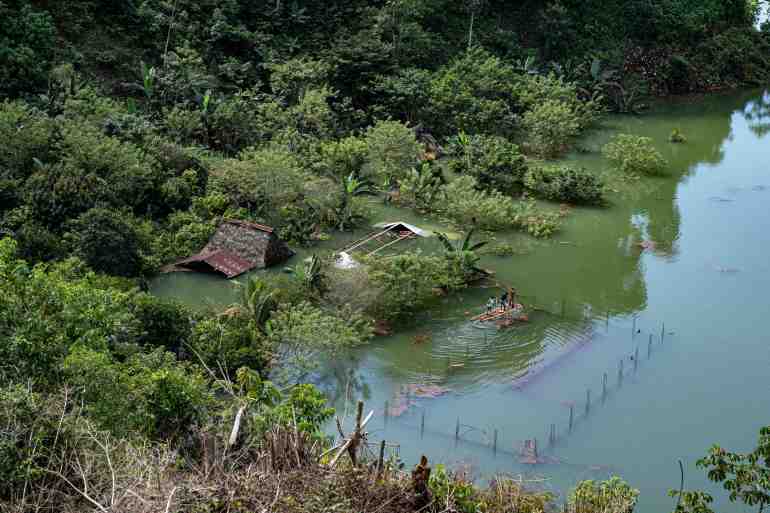
Accessing the community
Accessing Caseiro Chibut Carcha is impossible without a boat. The head of paediatrics at Cobán hospital, Doctor Celina Flores Amaya, together with nurse Reghy Lcal Cuc made their way from Cobán, the capital of Alta Verapaz. As the crow flies, Cobán is only 14km away, although prior to the flooding, it would have been a 90km mountain road.
Now, the medical team uses roads where possible, but they cross flooded stretches by a combination of boat, temporary raft or simply wading through the water with their belongings held above their heads. A historically dry area, there are very few motorised boats, but various communities have set up sophisticated systems of homemade rafts, made from wooden crates and empty containers, charging between 10 and 15 Quetzales ($1.28 to $1.92) for each crossing.
By land, the medical team relies on the goodwill of the local communities or the army, who are willing to transport them until the road disappears again below the floodwaters.
Flores and Lcal Cuc arrive at the community of 346 people who make up Caseiro Chibut Carchá by small dinghy with an outboard engine. As they approach the village, the captain cuts the engine and his crewman sweeps an oar in the waters ahead of the boat to check for objects below the surface.
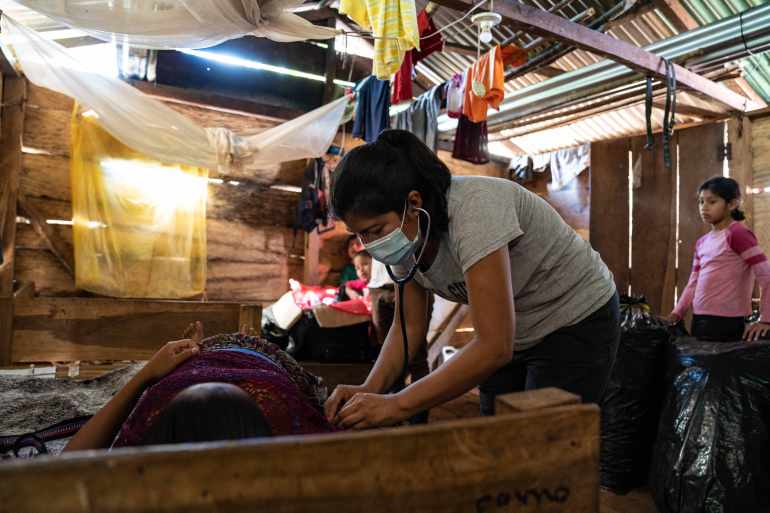
A month ago, there was a small river running through the community that supplied water to the village.
Now, the top of a church spire and the occasional roof are all that is visible of the village where 60 of the 80 houses are completely submerged.
At the water’s edge is a picket fence and partially submerged gate that leads to a house flooded to the eves.
In what was the garden, a mother stands waist-deep in water next to a partially submerged table, washing clothes as a small child sits cross-legged on the tabletop. A small boy swims up to them, naked from the waist down. Most of the children in these villages have itchy red welts on their skin, typically caused by scabies that is becoming resistant to treatment.
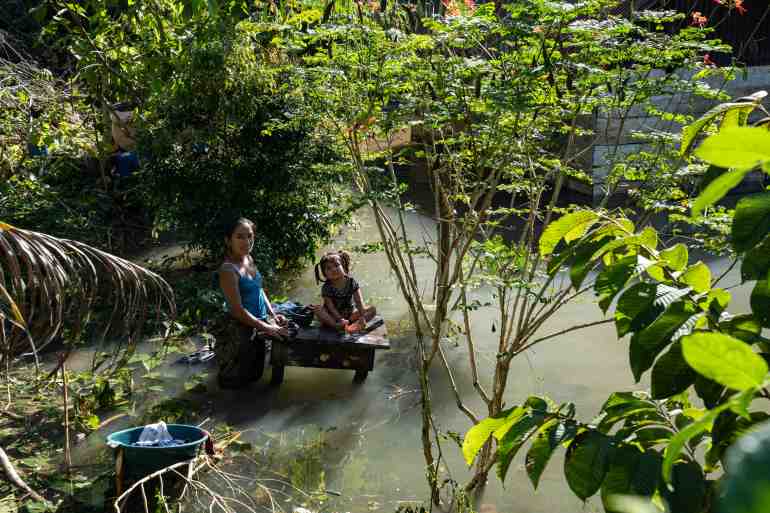
With no clean water to wash in, playing in stagnant water and living in cramped conditions, diseases are starting to spread. “We are seeing coughs, stomach issues, diarrhoea, vomiting and fevers, as well as skin conditions,” explains Flores.
The medical team disembarks from the small boat and climbs up a steep path until they reach one of the few remaining houses, where they set up a makeshift clinic.
The town of Sesajal
Hours later, as the sun begins to set, Flores and Lcal Cuc hitch a ride to the nearby town of Sesajal with an army lieutenant and his team who operate a small fibreglass boat to ferry people in the area.
Google Maps shows what Sesajal looked like before the flooding: a village divided by small dirt roads into about 25 square blocks, with two churches, a football field and a small clinic. Now, most of the houses are under water and hundreds of people are living in community shelters.
As with the other isolated villages, there is a makeshift helicopter landing site, about five minutes from the main square. The path from the helipad passes through thick mud, under bushes and alongside a church that is now one of the shelters. Children run and whoop excitedly at new visitors, most of them barefoot and covered in thick orange mud.
After a few minutes, the path opens up to reveal small wooden houses and the occasional concrete structure. A little shop, dark from the power outage, has mostly empty shelves aside from some warm coke sitting in an unpowered chest freezer.
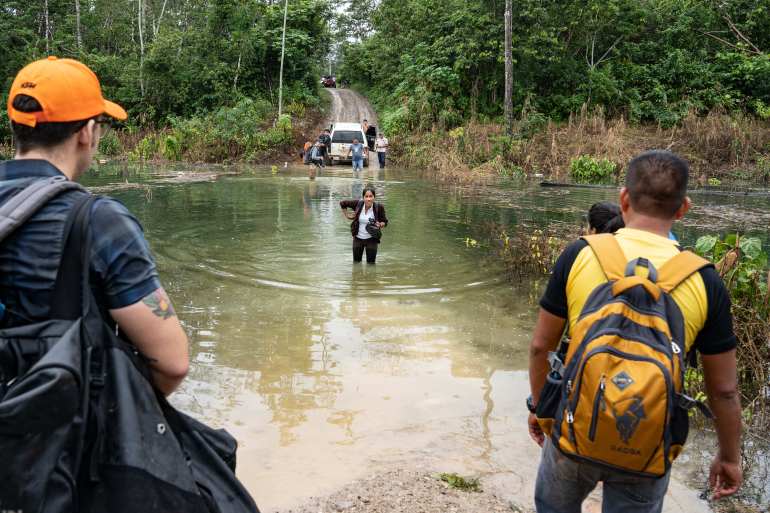
The town has a small clinic, maintained by district nurse Dulce Roseo Gonzales. Roseo usually lives with her parents near Cobán. However, the flooding means that she cannot easily get home and so has stayed in Sesajal in order to reach nearby isolated communities. Her holidays were suspended due to the disaster.
At 26, she has 3,338 people under her care. With a difficult job in normal conditions, made almost impossible by the flooding, she has treated everything from chronic conditions to emergencies. “The hardest was a miscarriage that happened two weeks into the floods,” she says. “It was very complicated because we had no ability to transfer the patient who was six months pregnant. I didn’t know what to do.”
Roseo praises the support of the doctors in nearby hospitals who have been in constant, albeit distant, contact with her to help her through complex medical issues.
Temporary kitchens have been erected under tarpaulins as several families share what utensils the community has left; most people have lost everything.
There is no electricity in the community and food is limited to what the helicopters can carry in. Roseo, Flores and Lcal Cuc sit down to a dinner of instant noodles, with a slice of fresh lime added for flavour. After dinner, the medical team finds places to sleep; Flores makes a bed on the concrete floor of the clinic, next to a modest collection of alphabetised medicines.
Using a headtorch to light the way, Roseo visits the rooms that have been donated to those families who have been left with nothing, including the churches and their surrounding storerooms. Several families are crammed into small rooms, no more than four square metres in size. Occasionally they have the luxury of a shared bed, although often they have nothing more than a patch of concrete floor.
One mother sits next to her baby, lit by a single candle. Roseo delivered the baby, as yet unnamed, on the day that the flooding began.
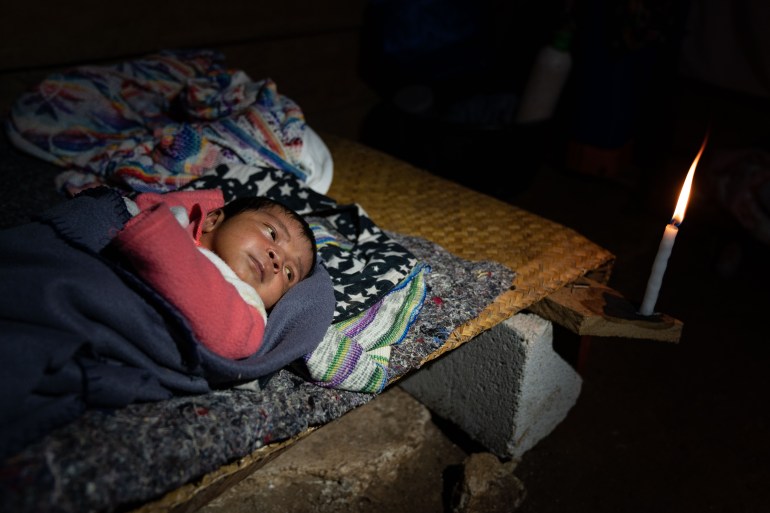
Moving to higher land
Early the next morning, with low clouds bringing yet more rain, the mayor of the village, Santiago Quib Chub, is busy directing the people who are helping remove the furniture from his house.
“Before the flooding, I looked over around 18 houses,” he explains, looking out over the flood plains where only a handful of roofs poke through the surface.
Quib Chub built two houses: one for his mother and one for his family. His mother’s house, like most in the village, is completely submerged under the floodwater. Quib Chub’s remaining home is an unusually sophisticated, two-storey concrete structure with a small Juliet balcony on the ground floor that is now only inches from the surface.
The water level has risen by a metre overnight and so it is inevitable that his house, too, will flood.
“I feel sad but strong,” he says, looking defiantly over his flooded community.
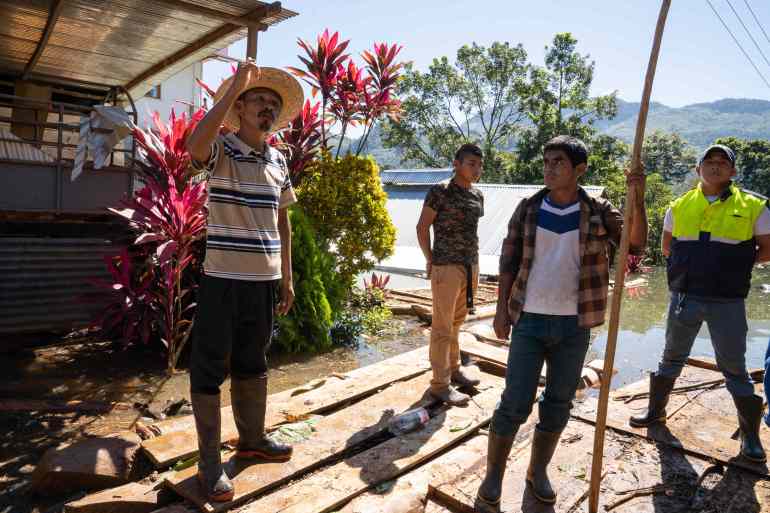
The town of Sesajal was home to 276 families. Ninety of those families are waiting on the same “island” as Quib Chub, although the remaining 166 have moved to higher land in the mountains, living under tarpaulins or other kinds of temporary structures in a desperate attempt to escape the floodwaters that continue to rise each day.
Quib Chub coordinates food supplies and distributes them to isolated communities. But the dispersal of the community makes his job even harder. Remote leaders relay information about the physical needs of the isolated groups. “It would be easier if we were all together,” he says, “but not everyone wanted to stay on this bit of land.”
Lieutenant Colonel Peter Thayer, the civil affairs officer for Joint Task Force-Bravo, the US team that assisted the Guatemalan humanitarian relief efforts, recognises the exceptional organisational skills and strong bond among the communities. He is aware of communities surviving on limited rations, yet still turning away helicopters who had mistakenly been sent to the same village twice, knowing that other local villages remained without food.
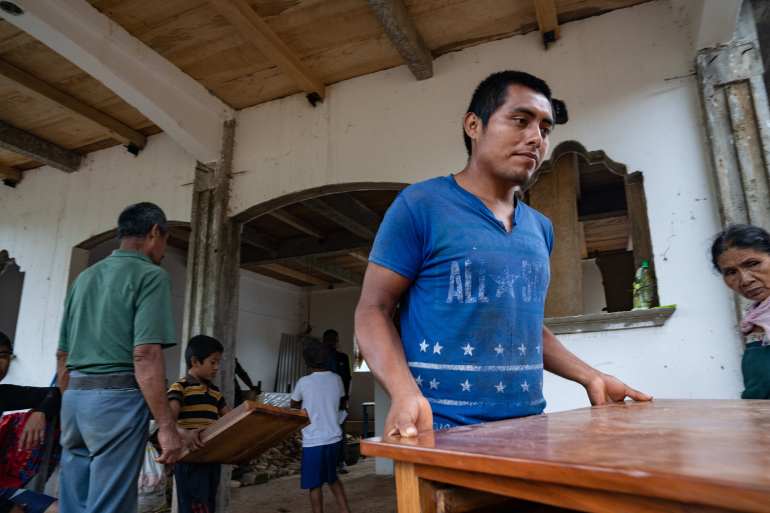
‘We need somewhere we can move to’
Wener Ochoa, an agricultural engineer and professor at the University of San Carlos of Guatemala, estimates that it will take at least three to five months for the land to dry, although possibly as long as six months in some places in Alta Verapaz. “This is very serious because it will then be almost at the next rainy season,” he explains.
The floods have also destroyed the land that provided sustenance.
Peace Brigades International’s report on social struggles in Alta Verapaz, released this year, highlights the importance of the land: “The land is essential to their being: more than just a place to live and be, it is a place where they can reinforce their social fabric, their roots, their identity, their history, and this is very frequent and common in the area of the Verapaces and Polochic.”
Ochoa’s concern is that the loss of agricultural land will lead to “more deforestation with the aim of obtaining land that can be cultivated (especially basic seeds such as corn and beans) that can’t be grown in the affected areas”.
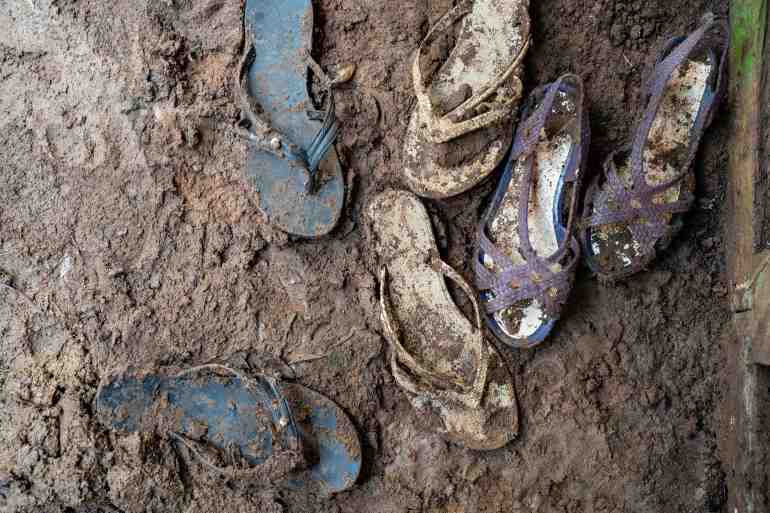
The community leaders of both Sesajal and Caseiro Chibut have asked that their communities be relocated.
“We need help from the government or from organisations. We need somewhere we can move to where we can farm the land. We don’t need much space, just enough to live off,” explains Choc Giut.
However, the tense history between Guatemalan authorities and Indigenous communities could lead to issues of trust. “Many people would prefer to die in their area before evacuating with no guarantees [that they will be given new lands to permanently live on],” says a humanitarian worker, working closely with Indigenous communities.
CONRED spokesman David Deleon is aware of these complex issues. “We need to carry out detailed investigations before putting relocation plans in place. We have to consider cultural and language issues before attempting to relocate these communities.”
Deleon estimates that it will be a year before any relocation programme is ready for execution. In the meantime, it is unclear who will be supplying food to these people. As private donations begin to end, there is a clear need for long term solutions.